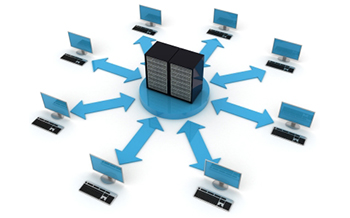
5 Ways SMBs Can Save Money on Security
Small-to-medium sized businesses and large enterprises may seem worlds apart, but they face many of the same cyber-security threats. In fact, in recent years, cyber-criminals have increasingly targeted SMBs. This is because it’s widely known that SMBs have a smaller budget, and less in-house expertise, to devote to protection. Thankfully, there are several things SMBs can do today to get more from even the most limited security budget. And, no, we aren’t talking about cutting corners. Far too often, SMBs cut the wrong corners and it ends up costing them more money in the long run. It’s a matter of taking a smarter approach to security. Here are five smart approaches to take
- Prioritize - Every business has specific areas or assets critical to its core operations. Seek the input of valued staff and team members to determine what these are. Is there certain data that would be catastrophic if it was lost or stolen? If hackers compromise a network, or prevent access to certain applications, how disruptive would it be to daily business operations? What kind of potential threats or vulnerabilities pose the greatest risk to the company or your customers/clients? Focus on the most likely risks, not theoretical risks that "could happen." Asking such questions gives you a clearer more complete perspective as to where to focus available security resources.
- Develop and Enforce Policies - Every SMB needs to implement a security policy to direct employees on appropriate and inappropriate workplace behaviors relative to network, systems, and data security. Merely drafting this document isn't enough. Employees must be held accountable if they fail to adhere to policy. Such policies should be updated regularly to reflect new technology and cultural shifts. For example, a document written before social media took off, or before the BYOD (Bring-Your-Own-Device) movement, doesn't necessarily apply today.
- Education - Ongoing end user training must be provided. Many security breaches happen because employees fail to recognize phishing schemes, open emails from unknown sources, create poor passwords that are seldom changed, and don't take proper precautions when using public Wi-Fi connections on personal mobile devices also used for work.
- Take to the Cloud - Running applications and servers in-house is a costly endeavor. Leveraging the cloud today allows SMBs to cut costs while also strengthening their security. Cloud operators typically have built-in security features, alleviating SMBs of the burden of maintaining security themselves. Today, not only can SMBs shift much of the burden of IT to the cloud, but they can also outsource much of their security by taking advantage of the remote monitoring, maintenance, and security tools provided by Managed Service Providers (MSPs).
Don't Aim for Perfection - There is no such thing as perfect security. Striving for perfection is expensive and can prove to be more costly in the end. Improving protection and response would be a more ideal allocation of funds. It can take a hacker several months to figure out your systems and do real damage. Having the ability to quickly detect their presence, and mitigate any potential damage they may cause, is a more realistic and less expensive approach than thinking you can completely remove any probability whatsoever of a hacker breaching your system.
Contact us at ContegoIT







